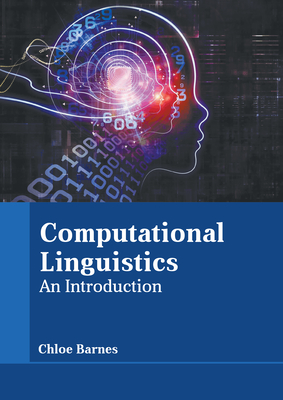Deep Learning Approaches to Text Production
IF 5.3
2区 计算机科学
Q2 COMPUTER SCIENCE, ARTIFICIAL INTELLIGENCE
引用次数: 0
Abstract
Text production (Reiter and Dale 2000; Gatt and Krahmer 2018) is also referred to as natural language generation (NLG). It is a subtask of natural language processing focusing on the generation of natural language text. Although as important as natural language understanding for communication, NLG had received relatively less research attention. Recently, the rise of deep learning techniques has led to a surge of research interest in text production, both in general and for specific applications such as text summarization and dialogue systems. Deep learning allows NLG models to be constructed based on neural representations, thereby enabling end-to-end NLG systems to replace traditional pipeline approaches, which frees us from tedious engineering efforts and improves the output quality. In particular, a neural encoder-decoder structure (Cho et al. 2014; Sutskever, Vinyals, and Le 2014) has been widely used as a basic framework, which computes input representations using a neural encoder, according to which a text sequence is generated token by token using a neural decoder. Very recently, pre-training techniques (Broscheit et al. 2010; Radford 2018; Devlin et al. 2019) have further allowed neural models to collect knowledge from large raw text data, further improving the quality of both encoding and decoding. This book introduces the fundamentals of neural text production, discussing both the mostly investigated tasks and the foundational neural methods. NLG tasks with different types of inputs are introduced, and benchmark datasets are discussed in detail. The encoder-decoder architecture is introduced together with basic neural network components such as convolutional neural network (CNN) (Kim 2014) and recurrent neural network (RNN) (Cho et al. 2014). Elaborations are given on the encoder, the decoder, and task-specific optimization techniques. A contrast is made between the neural solution and traditional solutions to the task. Toward the end of the book, more recent techniques such as self-attention networks (Vaswani et al. 2017) and pre-training are briefly discussed. Throughout the book, figures are given to facilitate understanding and references are provided to enable further reading. Chapter 1 introduces the task of text production, discussing three typical input settings, namely, generation from meaning representations (MR; i.e., realization), generation from data (i.e., data-to-text), and generation from text (i.e., text-to-text). At the end of the chapter, a book outline is given, and the scope, coverage, and notation convention文本生成的深度学习方法
文本生成(Reiter和Dale 2000;Gatt和Krahmer 2018)也被称为自然语言生成(NLG)。它是自然语言处理的一个子任务,主要关注自然语言文本的生成。尽管NLG与自然语言理解对沟通同样重要,但它受到的研究关注相对较少。最近,深度学习技术的兴起导致了对文本生成的研究兴趣激增,无论是在一般情况下还是在文本摘要和对话系统等特定应用中。深度学习允许基于神经表示构建NLG模型,从而使端到端NLG系统能够取代传统的流水线方法,这使我们摆脱了繁琐的工程工作,并提高了输出质量。特别地,神经编码器-解码器结构(Cho等人,2014;Sutskever、Vinyals和Le 2014)已被广泛用作基本框架,其使用神经编码器计算输入表示,根据该结构,使用神经解码器逐个令牌地生成文本序列。最近,预训练技术(Broscheit等人,2010;Radford 2018;Devlin等人,2019)进一步允许神经模型从大型原始文本数据中收集知识,进一步提高了编码和解码的质量。本书介绍了神经文本生成的基本原理,讨论了主要研究的任务和基本的神经方法。介绍了具有不同类型输入的NLG任务,并详细讨论了基准数据集。编码器-解码器架构与卷积神经网络(CNN)(Kim 2014)和递归神经网络(RNN)(Cho等人,2014)等基本神经网络组件一起介绍。详细阐述了编码器、解码器和特定任务的优化技术。对任务的神经解决方案和传统解决方案进行了对比。在书的最后,简要讨论了最近的技术,如自我注意网络(Vaswani等人,2017)和预训练。在整本书中,给出了数字以便于理解,并提供了参考资料以便于进一步阅读。第一章介绍了文本生成的任务,讨论了三种典型的输入设置,即从意义表示生成(MR;即实现)、从数据生成(即数据到文本)和从文本生成(即文本到文本)。在本章的最后,给出了一本书的大纲,以及范围、覆盖范围和注释惯例
本文章由计算机程序翻译,如有差异,请以英文原文为准。
求助全文
约1分钟内获得全文
求助全文
来源期刊

Computational Linguistics
工程技术-计算机:跨学科应用
CiteScore
15.80
自引率
0.00%
发文量
45
审稿时长
>12 weeks
期刊介绍:
Computational Linguistics, the longest-running publication dedicated solely to the computational and mathematical aspects of language and the design of natural language processing systems, provides university and industry linguists, computational linguists, AI and machine learning researchers, cognitive scientists, speech specialists, and philosophers with the latest insights into the computational aspects of language research.
 求助内容:
求助内容: 应助结果提醒方式:
应助结果提醒方式:


